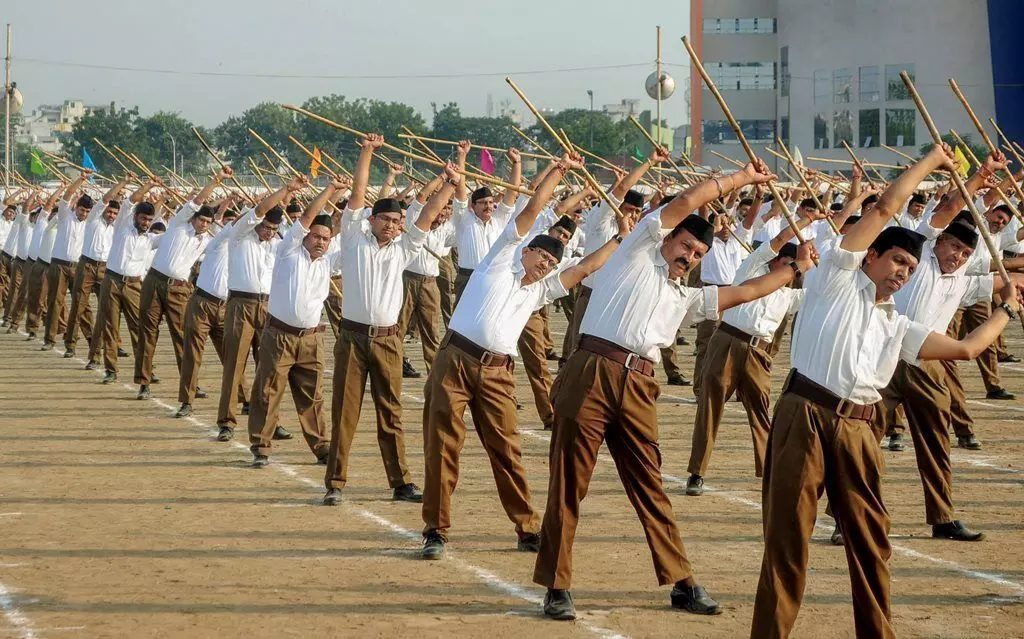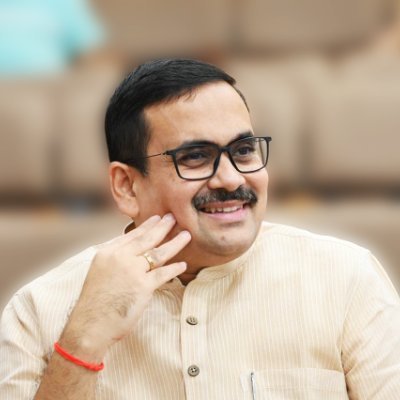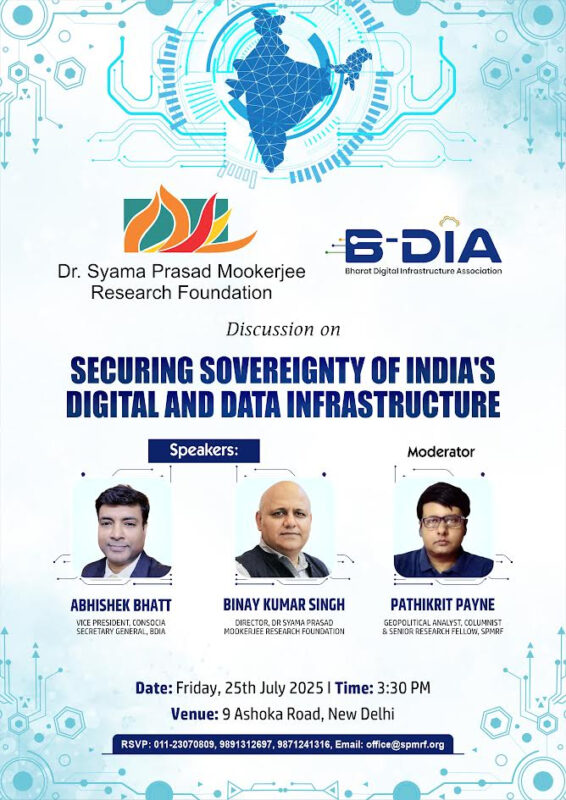The centenary year of the RSS marks its mission to unify and awaken India’s civilizational pride, self-renewal, and strength through dedicated action and cultural cohesion.
RSS Sarsanghchalak Dr Mohan Bhagwat’s Vijaya Dashami address this year heralded the start of a new era for the RSS and the achievement of a historic milestone. It was a watershed moment; the RSS had entered its centenary year.
Each year the Vijaya Dashami address proffers a new dimension of thought and action and leaves most with a sense of renewed vigour and commitment for dedication to causes that are beyond the routine self. RSS at hundred, the essence of this year’s address, was also a moment for a deeper and a more lasting self-renewal.
Through challenge decades, the RSS often faced inveterate hatred and opposition, undisguised odium. These invectives and attacks primarily came from forces, ideologies and movements for whom the term ‘glorious Bharat’ is a red rag, civilisational India just another imagined space and for whom the RSS was worthy of being decimated since it espoused these among many other ideas and narratives. The Sangh has persisted, survived, expanded and ultimately triumphed.
For an organization and a movement as wide and varied as RSS, a self-renewing existence and expansion through a ceaselessly multi-multifaceted action for societal transformation, empowerment and equity and for the recovery of the civilisational and cultural fundamentals of Bharat, the persistence of a century is, in itself, the indication of its resilient spirit and transformative objective.
One of the RSS stalwarts, HV Seshadri, who made seminal contributions in later years, in articulating the Sangh’s world-view, writes on how Dr Hedgewar’s – Doctorji’s – thoughts, when he was in the thick of the struggle for freedom, also ‘went much farther than the immediate objective of achieving freedom.’
Dr Hedgewar was a staunch advocate of complete freedom – purna swaraj. Legendary pracharak Nana (Narayan Hari) Palkar, in his magnum opus ‘Man of the Millennia: Dr Hedgewar’, writes how noted Gandhian thinker, philosopher and activist Dada Dharmadhikari recalled that Dr Hedgewar ‘used to insist that if you invite anybody to deliver a speech at any event or function, you must ensure that he or she supports total and complete freedom of India.’ And yet his being in the thick of the struggle did not cloud his vision of the future and of the challenges that would emerge before a free India. In step with the icons of India’s awakening, such as Swami Vivekananda and Sri Aurobindo among others, the absence of a unified national consciousness exercised Dr Hedgewar.
To him the ‘most serious shortcoming was the absence of an intense unified national consciousness among our people,’ argues HV Seshadri. ‘When, for example, the foreigners invaded any part of the country, the rest remained totally unconcerned. They had forgotten the first elements of a free national life: that freedom is indivisible, that its destruction in any one part endangers the freedom of the nation as a whole. Dr Hedgewar used to say that if the same defect was to remain, the nation’s freedom would be in jeopardy even after attaining freedom from the British yoke.’
Nana Palkar, movingly writes of the situation that upset Dr Hedgewar:
‘Hindusthan was in decline because of the laid-back approach of the Hindus. The relationship between individuals and the nation had unravelled. The once mighty Hindu society had been crushed under the atrocities of foreign powers for centuries. We had everything: manpower, wealth, and arms. We had all the strength needed, but utterly failed, because we never truly believed that we were part of the heritage of a great civilisation. We never felt that we were members of the Hindu society and had certain obligations towards our nation. Dr Hedgewar was thus understandably upset when analysing the history of the Hindu nation.’
Dr Hedgewar, writes Nana Palkar, resolved to ‘awaken the Hindu society, ‘unite the Hindus, instill pride and self-respect in them and rejuvenate their love for the nation and their great culture. He was determined to inculcate discipline, team spirit and strength, both mental and physical.’ The ‘steely organisation that would accomplish all of these things,’ notes Palkar, ‘would be the Rashtriya Swayamsevak Sangh.’
Among the many facets and dimensions of Sangh, that Dr Hedgewar sowed and nurtured, was the Shākhā. It is the defining dimension of Sangh, one which is so well-known and yet whose essence is often missed by those who attempt to study RSS externally and foist a certain superficial reading of it.
Of the Shākhā, HV Seshadri writes, it was ‘designed so as to remove this serious drawback and create an intense all-Bharat national consciousness. Common commands in Sanskrit, common Sanskrit prayer to Bhārat Mātā – the mother of all the children of this land – songs, stories and sayings of the great, talks and discussions on problems affecting the nation, emphasis on the venerated points of our national faith and values of life, the daily chanting of the Ekātmatā Stotra and Ekātmatā Mantra which highlight the unifying and harmonizing aspects of our historical, cultural and spiritual traditions – these and similar other day to day programmes go on in thousands of Shākhās in cities, in villages and in the far-off forest and hilly regions.’ In its centenary year the hope and pledge are to see the number of active Shākhās across the country rise to one lakh.
Shri Guruji MS Golwalkar, best describes, as only he could, Dr Hedgewar’s and the Sangh’s umbilical and spiritual essence and bond. Of Dr Hedgewar’s complete identification with the mission. To him, Dr Hedgewar, was of an ‘absolutely pure character’ with a ‘high level of commitment to the mission’ whose biggest assets were ‘untiring work through day-and-night’ and ‘whose ‘every action reflected the Sangh.’ Every word he spoke, Shri Guruji recalled ‘was for the Sangh. Even while talking about trivial matters, his conversations invariably used to end up in the Sangh. He has such a gift of conversation. His inner self had merged itself completely with the Sangh…People who came in contact would be transformed. Because of this identification of his life with the Sangh, there was never a need to talk about the Sangh and, as such there was never a need to speak of its goal and mission separately.’
On this sturdy physical edifice and the edifice of ideals and the vision of seeing a resurgent India with the consciousness of her civilisational self once more rekindled, thus, the Sangh’s work evolved and has been evolving over a hundred years.
A central propelling force of this vast uninterrupted movement is the vision of India, as Shri Guruji once described it, ‘a land worshipped by our seers and sages as mātribhūmi (motherland), dharmabhūmi (land of dharma), karmabhūmi (land of duty) and punyabhūmi (land of virtuous deeds), a veritable devabhūmi (a land of gods) and moksabhūmi (land of liberation).’
That vision has lent the Sangh an inexhaustible reservoir of inner power and resilience, making it the only such a movement for which terms such as stagnation, routine, exhaustion and depletion, are terms that remain foreign and non-existent, even after a hundred years.
Source : https://www.millenniumpost.in/opinion/rekindling-national-consciousness-585576
(The views expressed are the author's own and do not necessarily reflect the position of the organisation)



